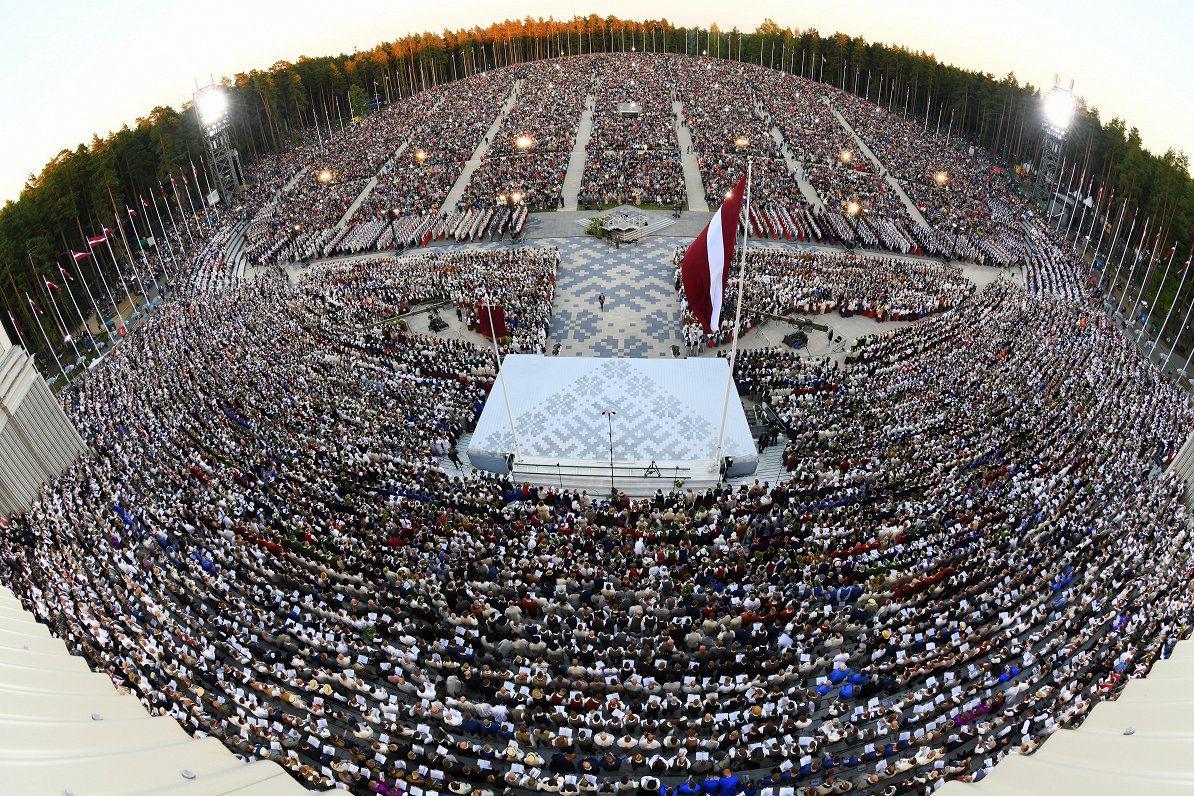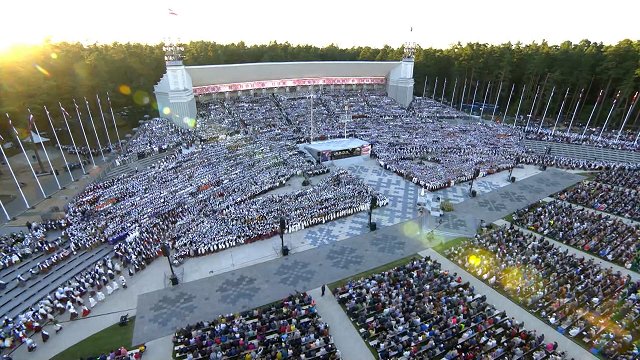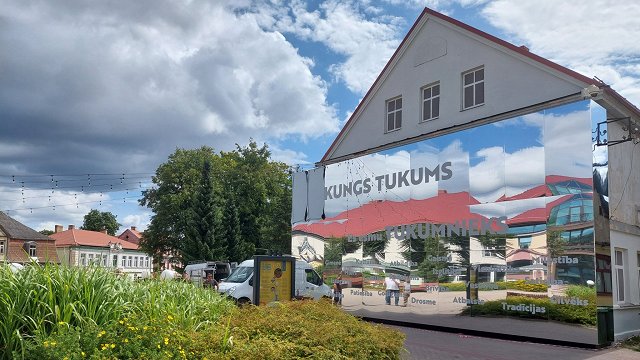Numbers
According to official figures, a total of 40,560 participants will participate in the 2023 XXVII General Latvian Song and XVII Dance Festival. Please note that is the number of participants, not the number of attendees or spectators.
Among that number are 454 choirs (15,870 members) and 695 dance groups (16,879 members).
66 wind/brass bands (2,097 members) will participate in the song festival, while another 508 collectives from other cultural areas add another 5,714 members.
Latvia's overseas diaspora is represented by 88 collectives (2,587 members) and represent 22 different countries: the USA, Australia, Austria, Belgium, Brazil, Denmark, France, Croatia, Estonia, Italy, Ireland, Japan, Canada, Great Britain, Luxembourg, the Netherlands, Norway, Finland, Switzerland, Ukraine, Germany and Sweden.
Names
968 participants will celebrate their birthdays during the festival (Happy birthday to you all!). Coincidentally, the largest number (139 birthdays) will be on the final day, making it one to really remember.
The most popular names among the participants are:1001 Jānis, 644 Ilze, 500 Ieva, 485 Dace, 463 Inese, 451 Līga, 422 Kristīne, 421 Inga, 403 Andris and 398 Laura. As you can see, with the exceptions of Jānis and Andris, they are all female names.
Ages
Interestingly, the age spread of Song and Dance Festival participants is fairly even, suggesting traditional Latvian culture attracts participants among young and old alike. Certainly age is no bar to involvement.
From 1 to 13 years – 2,239 participants
From 14 to 18 years – 4,942 participants
From 19 to 29 years – 6,832 participants
From 30 to 39 years – 6,226 participants
From 40 to 49 years – 6,828 participants
From 50 to 59 years – 6,906 participants
From 60 to 69 years – 4,348 participants
From 70 to 96 years – 2,226 participants.
Foreign guests
Traditionally, foreign groups also participate in the Festival and often provide a memorable counterpoint to Latvian culture. The Japanese choir Gaisma and the Lviv National Academic Men's and Boys' Choir Dudaryk from Ukraine will take part in the concerts in Mežaparks. Among the participants will also be the Wind Orchestra of the City Council of Flensburg (Germany), the Willich City Choir Cantamus (Germany), the Mepenne Young Mixed Choir (Germany), the Men's Choir of the City of Occieri (Italy), the vocal ensemble Heart Melody (China), and the Purpuri Hollola dance collective (Finland).
History
The Song and Dance Festival tradition is regarded as one of the backbones of Latvian statehood and identity. The first true festival took place in 1873 – more than 30 years before Latvia achieved independence – and involved 1,000 singers. However, the roots of the festival go back even further, to events such as the Daugava River Music Festival that took place in 1836, and of course further back still into Latvian folklore.
The idea of a song festival was taken up by Baltic German clergyman and author Juris Neikens, and in 1864 he organised the first gathering of Latvian men’s choirs in Dikļi. Six choirs of 120 singers and school children participated. Similar festivals took place in Matīši (1865), Rūjiena (1866), Jaunpils (1867), Smiltene (1868), and Cesvaine (1869). In 1870, Jānis Bētiņš organised the Kurzeme Song Festival in Dobele; 400 singers and a 40-member orchestra participated.
Taking 1873 as the starting point, the 2023 festival celebrates 150 years of the tradition.
The Festival has remained a constant through Latvia's often troubled history. During the Soviet occupation period there were efforts to load it with ideological baggage (for more on the Song Festival during the Soviet period, you can watch this short documentary), but its influence burst forth with renewed vigor during the 'Singing Revolution' of the late 1980s and early 1990s that led to Latvia regaining its independence.
Now the Song and Dance Festival is bigger, better and stronger than ever.


























